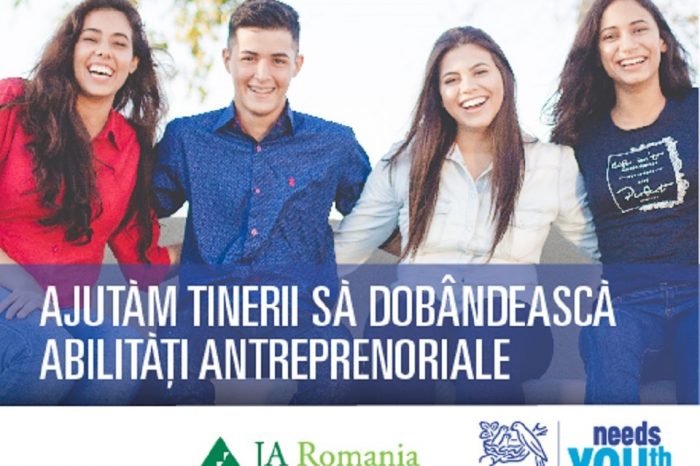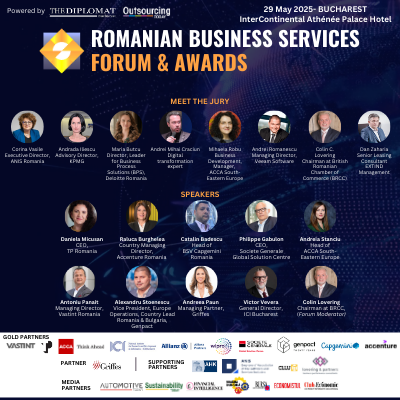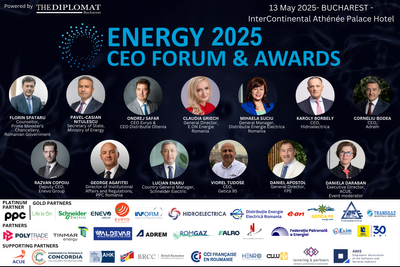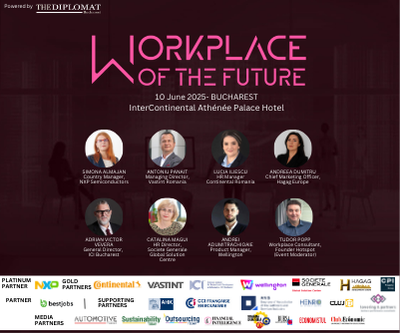Deloitte Romania: The virtual approach of L&D implies finding practical exercises different from the classroom deliveries

Learning and development (L&D) programs and initiatives have been headlines of corporate agendas in 2020 and continue to do so in 2021 as well, as businesses adapt to the ways and needs to learn of their employees and business partners. Also, studies of this year showed that improving L&D is a critical initiative to 86% of companies.
In this context, we recently talked in a comprehensive interview with LAURA COSMA, Senior Manager, Learning & Development, Deloitte Romania and CORINA STEFAN, Coordinator, Learning & Development, Deloitte Romania.
What is the new focus on capabilities and skills in 2020 and what to expect in this respect in 2021?
For sure 2020 is the year marked by the COVID-19 pandemics and the sudden switch to remote work. Deloitte was probably among the lucky employers, as we already had a work-from-home policy in place for several years and the IT systems were capable to support such a quick and massive switch.
Communication abilities, empathy, adaptability, mastering technology represented an important set of skills that we all needed in order to keep the connection within teams and with clients, to continue to monitor performance and to provide appropriate learning opportunities.
2021 will most likely be the year when tech savviness will continue to be on top of the focus list, alongside creativity, resilience, well-being and problem-solving.
Which are the current tendencies in delivering L&D programs and L&D management?
Clearly, virtual and blended delivery are first things that come to mind. This virtual approach implies a new way of looking at content, of finding practical exercises that are often different from the classroom deliveries. The right resources available at the right time for the right people are a focus point for all of us, as Deloitte is an organization with a culture relying on constant learning and development.
The 2020 World Economic Forum report on “The Future of Jobs” wrote that 50% of employees will need reskilling by 2025 and 40% of current workers’ core skills are expected to change in the next 5 years. Therefore, the L&D programs need to concentrate as well on supporting change readiness, growth mindset and tech skills. We see the rise of AI (Artificial Intelligence) and the way it reshapes the world of work (Udemy 2020 Workplace Learning Trends), and it is another strong motive to review the way we upskill/reskills our future workforce.
We have made a quick and successful turn this year, towards delivering our programs fully virtual, with supporting online platforms, and are happy to see that the participants appreciated the relevance and quality of the programs.
Which are the major fields and business activities where your company has applied the most different L&D programs in 2020? What is the focus of L&D programs for 2021?
The onboarding program for our junior hires saw the most extensive reshape, as we realized the we needed to go fully virtual with a program that was four weeks long, for intakes of 20 to 70 people each month. We acknowledged that we had to be more intentional in integrating the informal activities that would take place naturally in a face-to-face environment and to put more focus on certain knowledge and abilities. We built a program that relied on Deloitte’s values and growth mindset as two pillars to support building the needed set of technical skills, which were mixed in delivery with business skills such as communication, teaming and presenting in a virtual environment. The business skills courses were also intended as teambuilding events, alongside specific meetings with team leaders, their future teams and talent representatives, as we wanted to connect people, allow space for fun and relaxation, and maintain their engagement throughout the program. The overall feedback was really good and this whole process helped new joiners integrate better in their teams and start their roles with more confidence.
Another area where we invested a lot of effort into redesign and implementation is well-being: we created a series of one-hour workshops, delivered by our colleagues from L&D and from the business lines, focusing on various stressors that people felt during the pandemics. We created a place for sharing feelings, emotions, we fostered the sharing of experiences and we explored together possible solutions.
Our entire curriculum (both virtual deliveries and online resources) is focused on integrating well-being, conversations between people and tools to master working in a virtual environment, and we will continue the approach in 2021 integrating tech savviness at a higher level.
Which are the main challenges right now in reaching the best outcomes of L&D programs?
We approached the pandemics context as an opportunity to explore new ways of providing learning opportunities and were able to bee that we have so many options to deliver high-quality L&D programs. At the same time, the virtual environment brought different challenges in terms of how to keep the participants engaged in a course: attention span is much shorter, multitasking is much easier for a participant, many people feel more tired after a virtual delivery than in classroom, even if the duration is the same. Also, we crave for human connection with our colleagues, and that is harder to achieve when we are not in the same room. Add to that the diversity components – a mix of generations in the workplace, with various interests, different experiences and needs – and the image of what we must consider becomes clearer.
All these call for a new way of thinking on what the objectives of a learning program look like and on what methods are appropriate to foster interaction and collaboration with and between participants.















